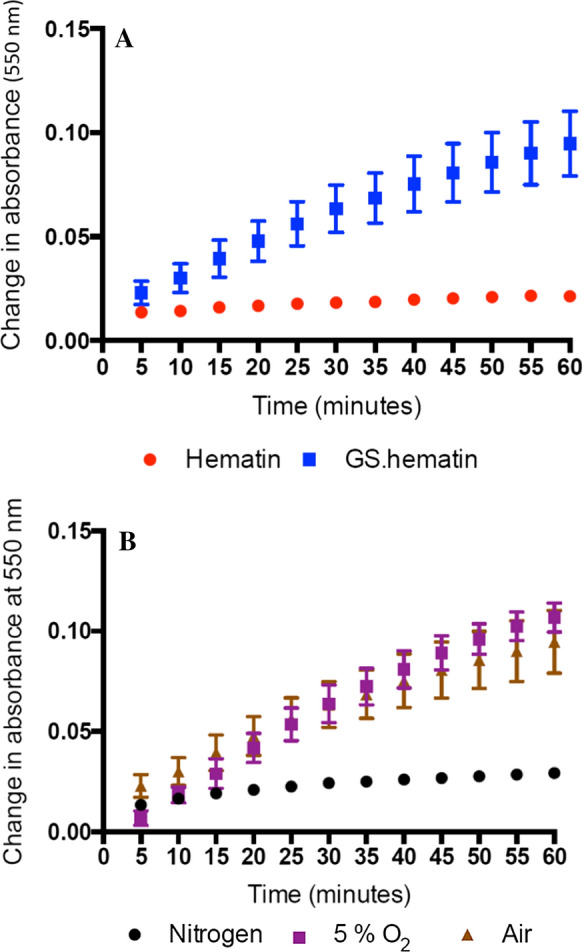Fig. 6.

Degradation of hematin and GS.hematin in the presence of ascorbic acid. (a) Hematin (10 µM) (Hematin, red cirlce) or GS.hematin (GS.hematin, blue squares) (10 µM hematin, 2 mM glutathione) was dissolved in 10 mM phosphate buffer, 20 mM KCl, pH 8.0 and absorbance recorded at 550 nm (GS.hematin) and 618 nm (hematin). Ascorbic acid (300 µM) was added to the solutions. (b) Hematin (10 µM) was dissolved in 10 mM phosphate buffer, 20 mM KCl, 2 mM glutathione, pH 8.0 and either left for 30 min (air, gold triangles), had 100% N2 (nitrogen, black circles) or 90% N2, 5% CO2, 5% O2 (5% O2, purple squares) bubbled through the solution for 30 min. Ascorbic acid (300 µM) was added to the solutions
